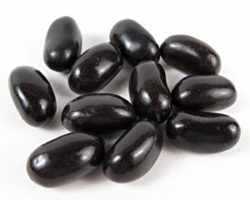Source of article The Jury Room - Keene Trial Consulting.
 It is hard to believe that more than two decades have passed since the controversial Time magazine cover featuring OJ Simpson with his skin intentionally darkened was distributed. It was published in 1994 and people were so upset that the magazine’s managing editor issued a public apology for publishing the cover photo. Today, we are covering very recent research that tells us the exact same thing is still going on in a wide variety of publications.
It is hard to believe that more than two decades have passed since the controversial Time magazine cover featuring OJ Simpson with his skin intentionally darkened was distributed. It was published in 1994 and people were so upset that the magazine’s managing editor issued a public apology for publishing the cover photo. Today, we are covering very recent research that tells us the exact same thing is still going on in a wide variety of publications.
The researchers looked at stories on both celebrities and politicians and found that when the story content was positive, the skin tone on the photos was lighter and when story content was negative, the skin tone on the photos was darker. And this was true regardless of race or gender—darker toned photos were used when the content of the story was negative. The researchers believe there is a pervasive belief that darkness and badness go together. And, in truth, psychology researchers have known this for years. But, say the researchers, this is the first time the reverse has been proven in research: when we hear about an evil act—we assume it was more likely committed by someone with darker skin.
The researchers describe the theoretical background for their work as the “black is bad” literature (the historical associations of darkness with negativity and lightness with positivity). The researchers cite multiple examples of this effect. For example, they point to research that says those who believed Barack Obama’s likeness was best captured in “artificially darkened photos” both evaluated him more negatively and were less likely to have voted for him in the 2008 election. Another example (among many) was that when professional sports teams athletes wore black uniforms, spectators perceived they were behaving more aggressively and referees responded more harshly with penalties.
So, knowing the long history of “black is bad”, the researchers wanted to see if “bad is black”—in other words, “Do people represent actors who commit wrongful acts as having darker skin than actors who commit conspicuously moral acts?”. And, to cut to the chase, the answer is a resounding Yes.
Here are some of their findings:
Across 6 studies, they found people described a person’s skin tone as darker when a morally bad act was committed than when a morally good act was committed.
The “bad is black” effect was associated more strongly with those who reported negative biases against dark-skinned minority groups or those who held beliefs pairing darkness with badness.
Interestingly, both groups displayed bias: the group who strongly associated darkness with negativity show the “bad is black” effect, while those low in a tendency to associate darkness with negativity display the “good is black” effect.
The researchers say it is important for us to understand how the “bad is black” effect emerges so we can sort out how to disrupt it. They express a concern for eye-witness identification (especially the problem-prone area of cross-racial identification). It is certainly possible that an eye-witness could “misremember” the perpetrator as having darker skin and therefore choosing innocent darker skinned people from a line-up rather than the guilty lighter-skinned alternatives.
From a litigation advocacy perspective, this is another point on which you may want to educate jurors with regard to the accuracy of eye-witness identification. However, it is also a point to be aware of for crafting case narrative. The researchers found that “regardless of race or gender” people with darker skins were seen as more guilty whether they were guilty or not. If one of the parties (regardless of race or gender) has darker skin, jurors are more likely to see that party as “bad” in whatever form that may take in your trial.
Alter, A., Stern, C., Granot, Y., & Balcetis, E. (2016). The “Bad Is Black” Effect Personality and Social Psychology Bulletin, 42 (12), 1653-1665 DOI: 10.1177/0146167216669123
